For perhaps twenty years now there has been at least one pair of nesting Great Horned Owls on the farm where I grew up near Cut Bank, Montana. They were never there when I was a kid but they’ve sure taken to it since. This farm still seems like home to me and I return to it at least once every year for a visit with family and of course to check up on the owls. It’s the perfect place for these birds as it’s isolated, there are many old barns and granaries for the owls to find sanctuary and mice, voles and the ubiquitous Richardson’s Ground Squirrels (gophers) are everywhere. Both the owls and I love the place!
Great Horned Owl in a barn cutout
Most often I prefer my birds on natural perches but there’s just something about owls and old barn wood that appeals to me. I think owls, particularly Barn Owls and Great Horned Owls, often just seem to “fit” in many rustic settings. In the image above, I like the warm tones of the bird contrasting with the cooler tones of the black background and some of the wood.
Juvenile (no “horns” yet) in warm, early morning light
The youngster above was sitting in an east facing cutout in an old granary just as the sun came up. The effect of the warm light on both bird and wood is fairly dramatic (no saturation added). This juvenile is wet from the dew, thus the “spikiness” on the top of the head. They look very different from the adults before they develop the horns.
Male and female, a breeding pair
I like this photo for two reasons. It gives us a good look at both the front and back views of GHO’s in one image and it so well illustrates reverse sexual dimorphism. Sexual dimorphism is a difference in form between males and females in the same species. In most birds, males are larger than females – one type of sexual dimorphism. Not so with these owls and most other raptors. In the image above, the female on the right is larger than the male on the left – thus reverse sexual dimorphism. There is still debate as to precisely why this trait was selected for in many raptor species.
Siblings in a sunny spot on the granary floor
Usually the owls raise their family up high among the rafters in one of the granaries or barns but one year they raised them on the floor of a cluttered old granary. I was surprised that predators didn’t take advantage of the situation but these two owlets thrived. GHO’s are known to be extremely aggressive in defending their nests and young and I suspect that fact played a role in the survival of these owlets.
Exploring the farm
The fledglings can fly at a surprisingly early stage, when they still look too gangly, awkward and undeveloped to do so. You never know where you will find one (or two), especially in the early morning. They seem to make a concerted effort to explore the farm as soon and as often as possible. It’s amazing where they turn up sometimes.
Juvenile on an old ladder after a night of exploration
They turn up in some pretty amazing places
Two adults in silhouette, waiting for dark to go hunting
I really enjoy these owls every time I go “home”. They seem to add a certain character to the farm that I appreciate and so does everyone else out there. It’s nice to know that in at least some situations, truly wild animals can coexist among humans – and even thrive.
Ron


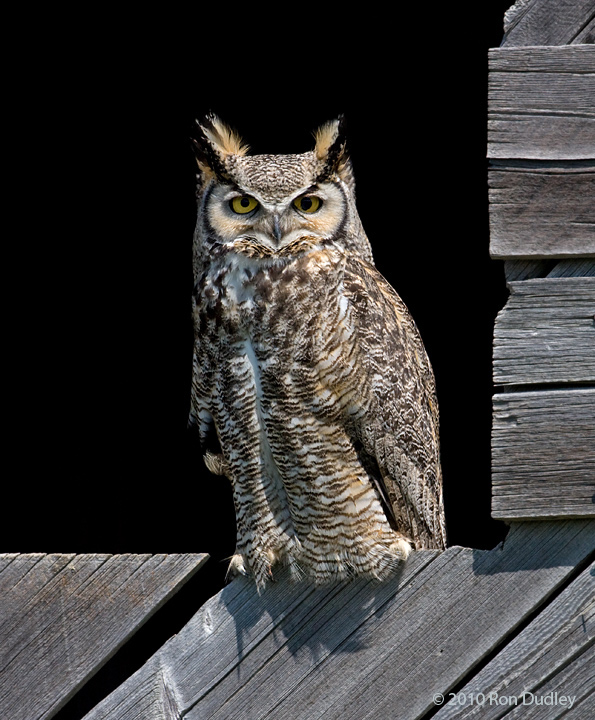
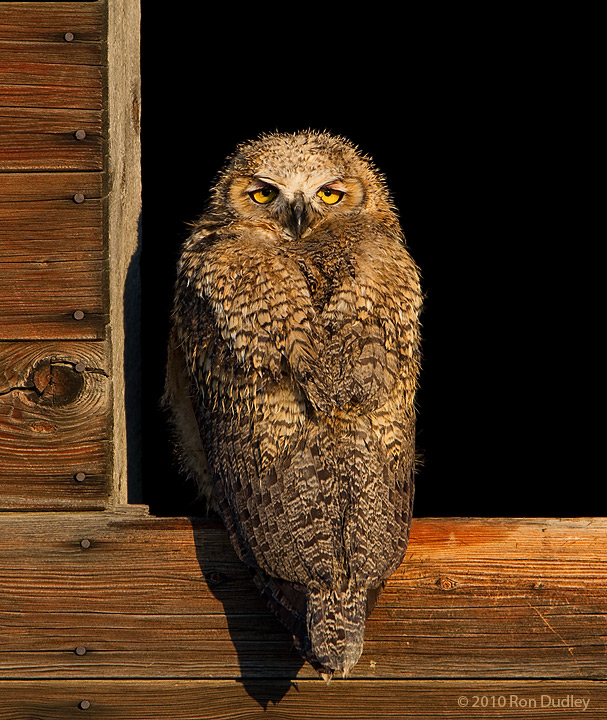
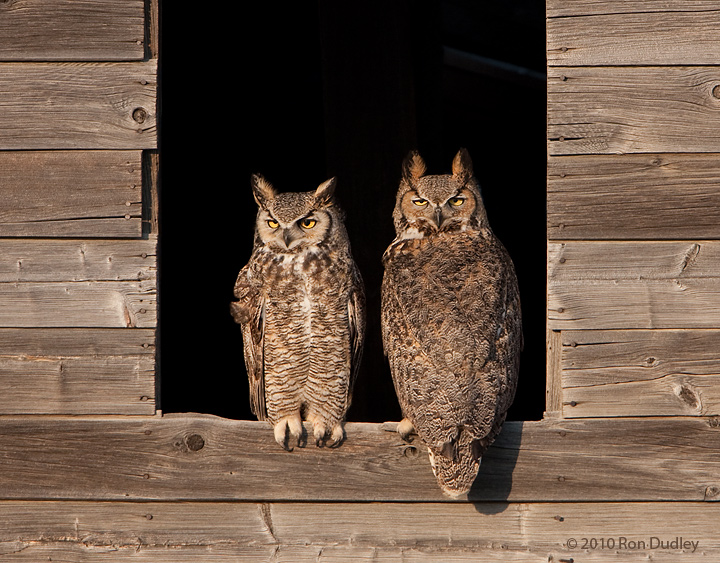
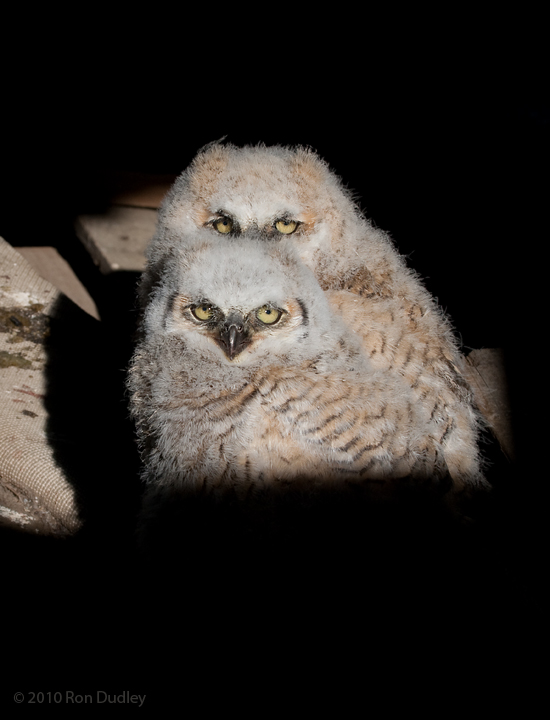

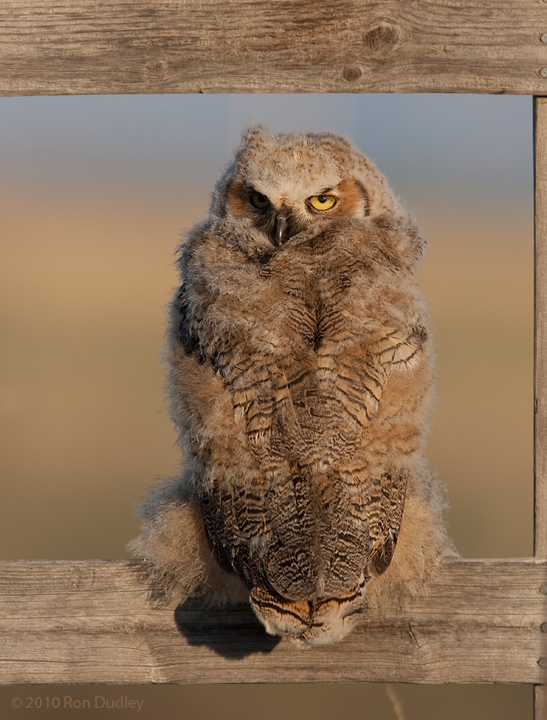
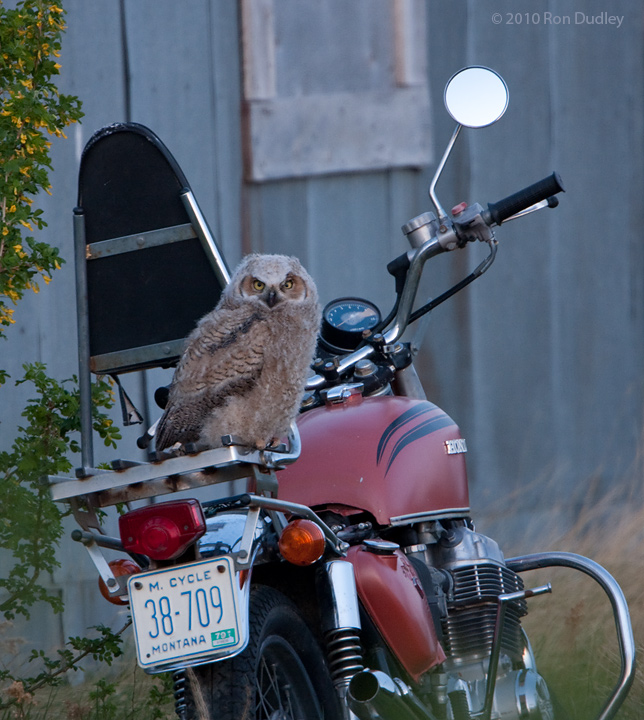
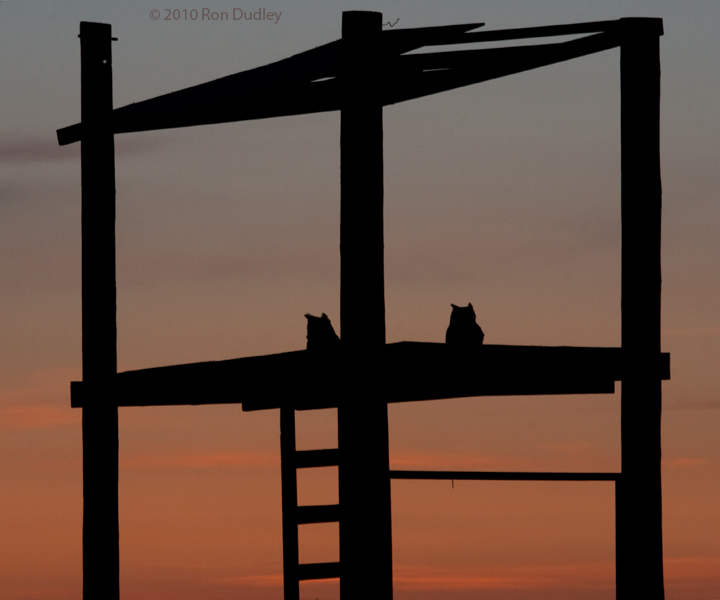
Wow I like all the picture
Ron, I just came upon this post — it showed up on the first page in a Google search for sexual dimorphism in GHOs. What great, evocative shots!
Too hasty on the “post comment” button. I meant to say how much I *LOVE* the motorcycle and silhouette shots. The two figures with pointy ears, sitting together against the sunset is priceless. I won’t anthropomorphize. Only in my head.
You have amazing picture here. Do you mind if I use the picture showing reverse sexual dimorphism for a graduate class paper. It will not be published, it is just for an assignment.
Thanks Angela. Yes, you may use GHO photo #1767 for your graduate class paper.
Absolutely stunning photos – thanks for sharing! You’re so lucky to live in a place to see these beautiful creatures up close. Enjoy
Thank you Dana. I actually don’t live on the farm any more but I return as often as I can. It still feels like “home”.
Hi thanks for the beautiful photos. I took a class in leather mask-making yesterday, and I needed reference for how to do the colors for a female Great Horned Owl. I assumed like most birds, the female would be smaller and duller in color, so I really appreciate your photo and explanation. Also, they likely think photographers show up in amazing places
The shot of the GHO on the bike is one in a million!!!
Ron
I remember being told that the male being smaller, was more agile was a more effective hunter. Being a swifter hunter during mating and baby feeding is a good trait to select for.
Sensational shots of these magnificent birds. The light and setting you’ve captured them in is nothing short of outstanding.
What a great opportunity. And a fine set of images as well. Of course I’m a big fan of all owls and owl photos. I really like the textures added to these shots by the weathered wood of the barn.
What great photos! A true depiction of life on the Dudley farm. Thanks Ron. These photos are beautiful.